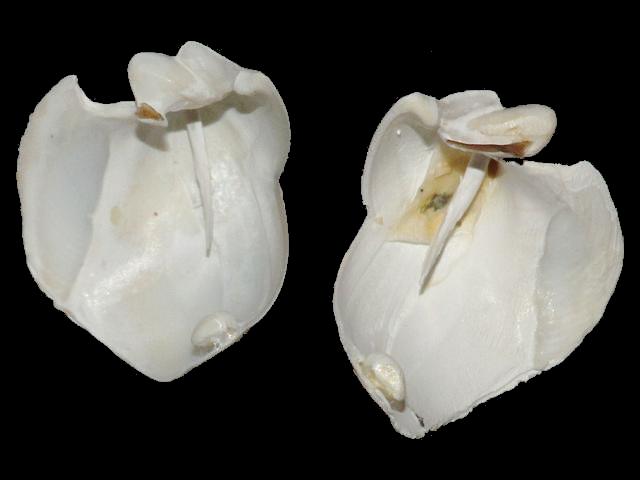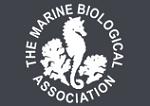
APHOTOMARINE
An educational resource dedicated mainly to the photography
and diversity of marine life that can be found in coastal waters
and intertidal areas of Great Britain and Ireland by David Fenwick.

Psiloteredo megotara (Hanley in Forbes & Hanley, 1848) - Big-ear shipworm
Scroll down and rollover titles to change screen image or click on title to view image.
Big-ear or Drifting shipworm
Psiloteredo megotara
- shell valve pair 1
Psiloteredo megotara
- shell valve pair 1
Big-ear or Drifting shipworm
Psiloteredo megotara
- shell valve pair 2
Big-ear or Drifting shipworm
Psiloteredo megotara
- shell valve pair 3
Big-ear or Drifting shipworm
Psiloteredo megotara
- shell valve pair 4
Big-ear or Drifting shipworm
Psiloteredo megotara
- shell valve pair 5
Big-ear or Drifting shipworm
Psiloteredo megotara
- shell valve pair 6
Big-ear or Drifting shipworm
Psiloteredo megotara
- live animal / with rule 1
Big-ear or Drifting shipworm
Psiloteredo megotara
- live animal 1
Big-ear or Drifting shipworm
Psiloteredo megotara
- boring in wood 1
Big-ear or Drifting shipworm
Psiloteredo megotara
- boring in wood 2
Big-ear or Drifting shipworm
Psiloteredo megotara
- shell valve pair 7
Big-ear or Drifting shipworm
Psiloteredo megotara
- shell valve pair 8
Big-ear or Drifting shipworm
Psiloteredo megotara
- shell valve pairs 1
Big-ear or Drifting shipworm
Psiloteredo megotara
- shell valve pairs 2
Big-ear or Drifting shipworm
Psiloteredo megotara
- shell valve pairs 3
Big-ear or Drifting shipworm
Psiloteredo megotara
- shell valve pairs 4
Big-ear or Drifting shipworm
Psiloteredo megotara
- shell valve 1
Big-ear or Drifting shipworm
Psiloteredo megotara
- shell valve 2
Big-ear or Drifting shipworm
Psiloteredo megotara
- shell valves 1
Big-ear or Drifting shipworm
Psiloteredo megotara
- shell valves 2
Big-ear or Drifting shipworm
Psiloteredo megotara
- shell valves 3
Big-ear or Drifting shipworm
Psiloteredo megotara
- paddles 1
Big-ear or Drifting shipworm
Psiloteredo megotara
- paddles 2
Big-ear or Drifting shipworm
Psiloteredo megotara
- paddles 3
Big-ear or Drifting shipworm
Psiloteredo megotara
- in tree roots and trunk 1
Big-ear or Drifting shipworm
Psiloteredo megotara
- holes / burrows in wood 1
Big-ear or Drifting shipworm
Psiloteredo megotara
- holes / burrows in wood 2
Big-ear or Drifting shipworm
Psiloteredo megotara
- holes / burrows in wood 3
Big-ear or Drifting shipworm
Psiloteredo megotara
- holes / burrows in wood 4
Big-ear or Drifting shipworm
Psiloteredo megotara
- species comparison 1
Scientific and European Names:
Psiloteredo megotara, Big-ear shipworm, Drifting shipworm, Psiloteredo, Shipworm, Skibspaeleorm, Scheepsworm, Teredinidae.
Images featured of this species were not taken in the Devon and Cornwall region. The images are of shells kindly loaded to me for the purposes of study, and after finding shipworms locally in Penzance.
Shipworms are notoriously difficult to identify and almost impossible to identify with any surity in the field. It is hoped that in providing a range of images of species here it may well help people identify and record species of shipworm, or at least give them a better idea of what they dealing with.
There are currently 12 species of shipworms that have been found in the UK, some are considered native, some are not. I say currently because there's always the chance of finding something new on wood that has floated around the Atlantic for some time.
Species found in the UK -
Lyrodus bipartitus
Lyrodus pedicellatus
Psiloteredo megotara
Teredo navalis
Teredora malleolus
Teredothyra excavata
Bankia bipennata
Bankia fimbriatula
Bankia gouldi
Nausitora fusticula
Nototeredo norvagica
Spathoteredo spatha
If anyone has material of species not featured here and are prepared to loan them to me, please get in touch. E-Mail.
A big thank you to Dr. Jan Light of the Conchological Society of Great Britain and Ireland for help with this page.
APHOTOMARINE supports open source data recording and sharing for the benefit of wildlife, recorders, research, science and education. The project recommends the following websites and works with the following bodies and organisations.
The Marine Biological Association or MBA, based in Plymouth, is one of the world’s longest-running societies dedicated to promoting research into our oceans and the life they support. Since 1884 the MBA has been providing a unified, clear, independent voice on behalf of the marine biological community.It has a growing membership in over 40 countries.
The National Biodiversity Network or NBN is a charity that supports open source data sharing and recording supporting conservation, science and education. "Why do recorders need open source?". Simply because it supports the core values of wildlife recording and the free use of records and data over a very wide network that includes partners like the Natural History Museum.
The taxonomy used here is based on that of the following database, which is also used by the MBA, NHM and the NBN.
The World Register of Marine Species or WoRMS.

The main objective of this website is in furthering environmental awareness and education through the medium of photography. To increase awareness and access to the wildlife of the region and help
people find and identify it. Sometimes the difference between species is obvious but many species can only be determined by observing microscopic characteristics that are specific to any one species.

